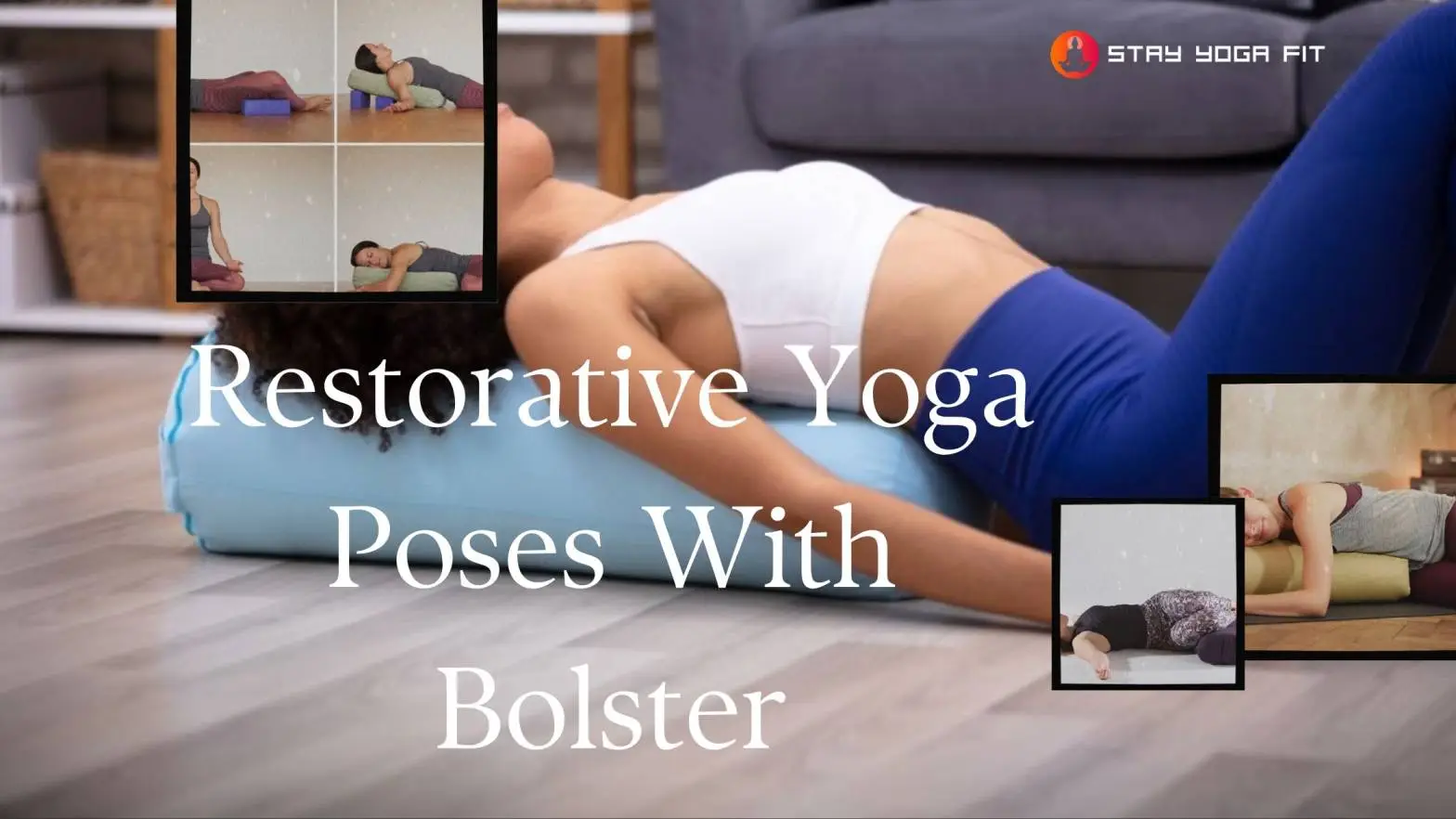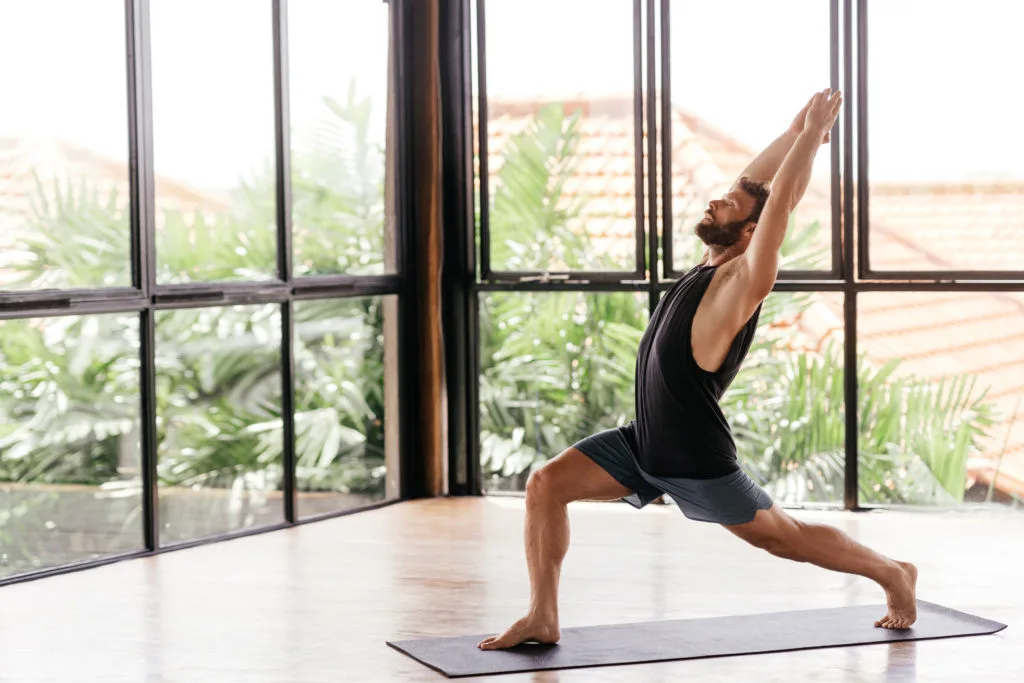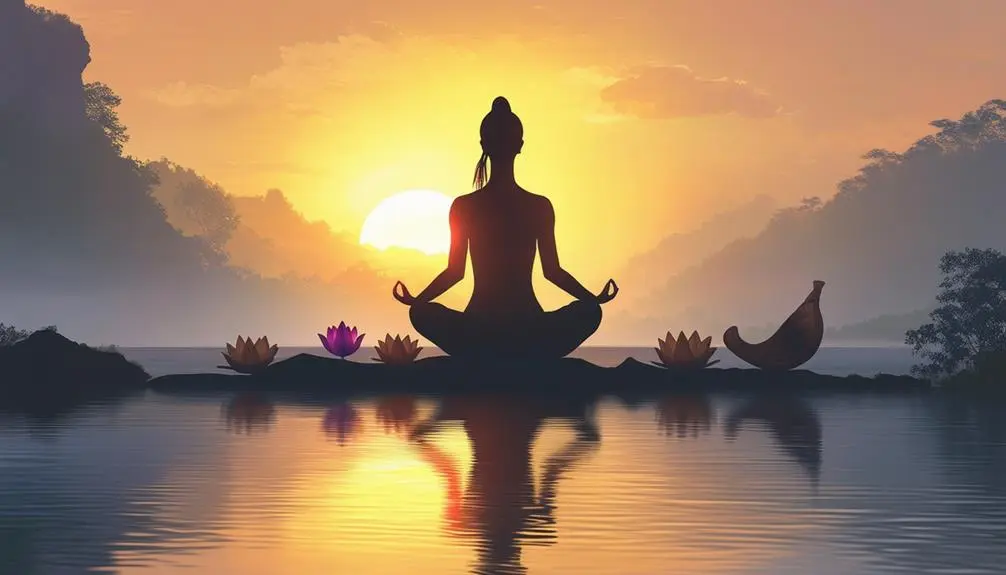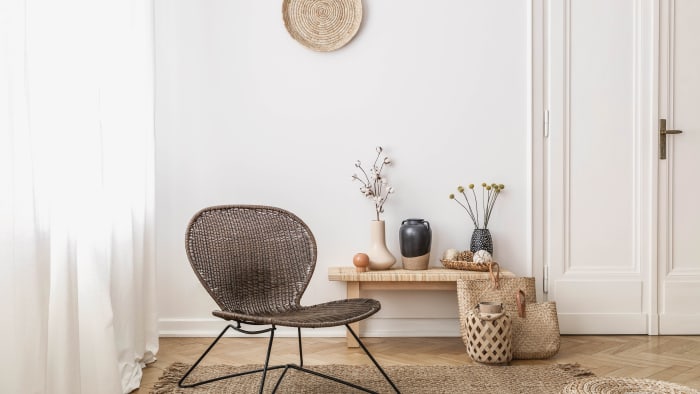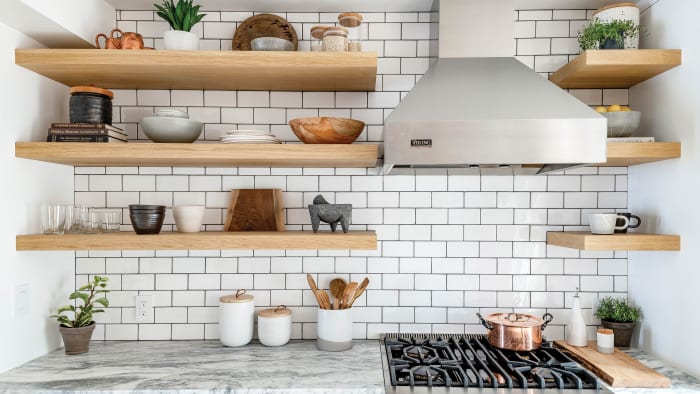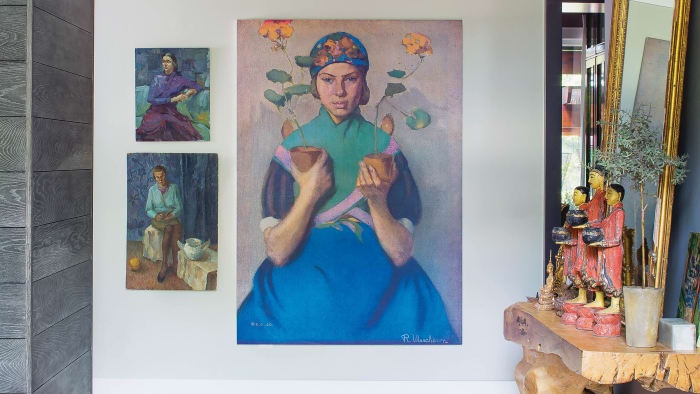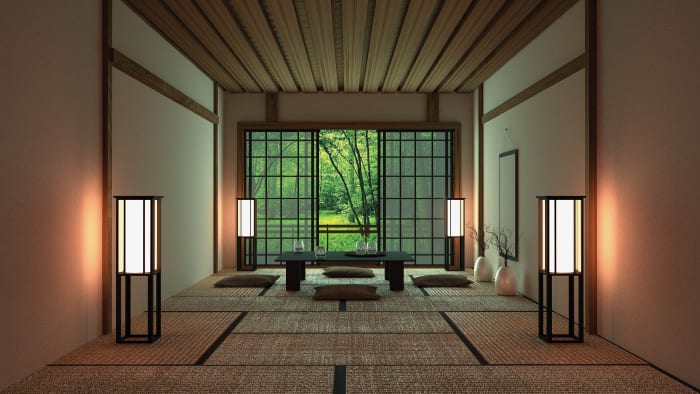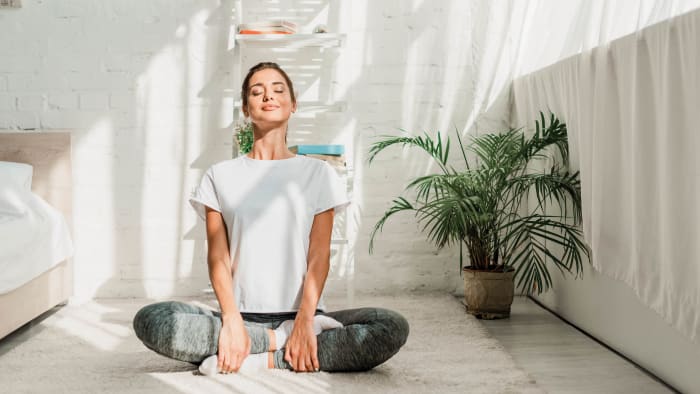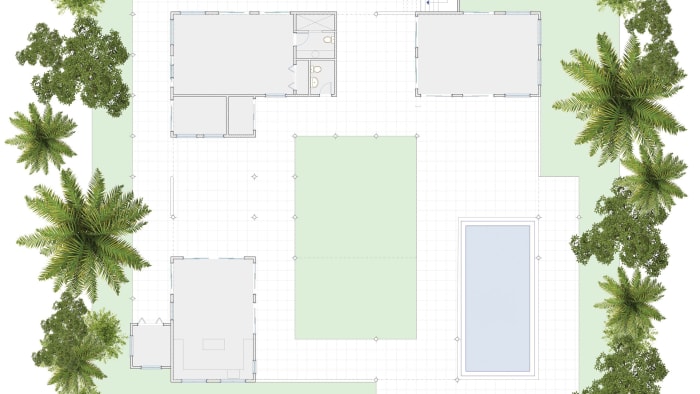Ever feel an immediate sense of ease when you walk into a room that’s clean and clutter-free? Perhaps the furniture is functional and comfy, and there is plenty of open space. Or maybe your eye is drawn to a beautiful painting or lush plant, and gentle sunlight pours in through a window. That room may follow the principles of an ancient Indian system of architecture and design called Vastu. Just as you cultivate prana (life force) in your body through your yoga practice, Vastu can help you create a positive feel and flow within physical spaces.
Vastu offers guidelines for constructing buildings (temples, businesses, and homes) and arranging the furnishings and objects within to maximize positive vibrational energy. Vastu focuses on aligning structures with the laws of nature by adhering to the cardinal directions (north, south, east, west), welcoming in energy from the sun, and honoring the five elements: earth, water, fire, air, and ether.
Vastu’s ultimate goal is to manage energy within a space, similar to how Chinese feng shui cultivates Qi (universal energy) to create harmony between people and their environments. By some estimates, this sister science to yoga, Ayurveda, and Jyotish (Vedic astrology) is thousands of years older than feng shui, with origins that can be traced to the Vedasa 3,000-year-old collection of Sanskrit poems and hymns that forms the foundation of Hindu theology.
Fire energy dominates the southeast, where you’ll find the kitchen in a Vastu home: The stove and food-prep surfaces face east to further tap into that fiery, nourishing vitality. But be cautious of your color palette, says Vastu consultant Kathleen Cox. Bright reds and oranges can stir too much heat in this region; opt instead for a deep merlot.
See also Live Purposefully: Intention-Setting Sequences for Morning + Night
Get On The Grid
Traditionally, Vastu focuses on organizing buildings based on a grid called the Vastu Purusha Mandala—a geometric chart that symbolically represents the cosmos. This blueprint encourages positive energy flow by mimicking patterns found in the natural world. A structure’s mandala grid is positioned so that its perimeter is flush with the cardinal directions, or the earth’s grid, in order to be more aligned with solar and cosmic forces. “Geometry acts like a tuning fork to supply the house with earth and star energy so that it vibrates with life-enhancing cosmic forces,” says Vastu designer Michael Borden.
Each mandala grid, regardless of its dimensions, has corners and central areas associated with the elemental energies of earth, air, fire, water, and ether—and rooms, furniture, and appliances are situated to correspond with and maximize the respective elements and their particular benefits.
The northeast area of the house possesses the water element and makes for a calming space for meditation. The southwest holds earth—a grounding place for deep rest. The southeast gathers fire, and it’s the traditional location for a kitchen. The northwest region fields air, which encourages movement and the sharing of ideas, and is ideal as a living room or communal space. The ether element congregates in the central sector, considered a sacred area that should be kept open so its powerful energy can spread outward and energize the entire space.
Vastu homes are designed to let in gentle sunshine from the north and east, with sightlines throughout that allow cosmic energy to move freely. You can further encourage positive flow by limiting what’s on display and selecting larger pieces (such as furniture and rugs) that fit a space while still creating a sense of openness.
When it comes to arranging furniture, people often have an intuitive sense of what makes them feel settled, says Borden. Listen to that instinct by paying attention to your breathing and any emotional shifts as you move furniture around. The space should feel good.
Synthetics release toxins via offgassing, says Vastu consultant Sherri Silverman. Instead, when selecting accents for your home, incorporate houseplants (which purify the air) and organic materials such as wooden furniture, wool or silk rugs, and bamboo shelves. Choosing tile, true adobe, brick, and natural linoleum will also help align your home with nature.
See also Clearing Clutter for a Simpler Life
Align Your Practice
It’s tradition to face east when practicing yoga (especially for morning Sun Salutations) because it puts you in line with the earth’s movement. Facing north is also acceptable, Silverman says, as it optimizes brain functioning.
While you won’t find interior design advice in the ancient texts, you can incorporate key principles of Vastu and its elemental influences into your home to create a harmonious flow and experience positive shifts in how you feel.
“You can apply Vastu to any home, and, just like with a yoga or meditation practice, sometimes you’ll notice a dramatic shift right away. Other times it’s consistent use that makes the difference,” says Sherri Silverman, PhD, founder of Transcendence Design and author of Vastu: Transcendental Home Design in Harmony with Nature. Even changing where you put the head of your bed or using more organic cleaning products can help transform your space and allow you to achieve deeper rest and improved health.
“What yoga does for the body, Vastu does for the home,” says Kathleen Cox, a Vastu consultant and author of Space Matters, a design book that celebrates the ancient system. “The goal is to create a healing, healthy space where you feel calm.”
But it doesn’t just happen. Design has to be intentional. Physical spaces have vibrations that influence how we feel and can help cultivate inner silence, peace, and fulfillment, says Michael Borden, a Vastu designer in Nelson, New Zealand. “By living in a Vastu space, you become slowly more aligned with the laws of nature to live a better and more prosperous, happy, and peaceful life.”
Vastu homes are plotted so that perimeter walls face the cardinal directions in order to access the earth’s natural energy grid. By designing the interiors of their homes to face the intercardinal directions, dwellers can align themselves with the natural resting places of the five elements and receive the maximum benefits from their corresponding vibrational influences. For instance, a bed positioned so that you sleep with the top of your head to the east (associated with consciousness) or to the south (healing energy) sets you up for deep rest, Silverman says. Similarly, facing northeast while working or studying can help keep your mind clear and alert while boosting focus and creativity.
See also How to Use the Ancient Principles of Vastu to Declutter Your Home and Improve Its Energy
Vatsu Now
Use these tips to better balance the energy in your existing space.
1. The Center Is Sacred
The middle region of a home or building, called the brahmasthana (Sanskrit for “establish wholeness”), is the central point where all energy convenes and disperses. It is said to be the most divine and powerful zone in a space and, as such, should be left open—free of furniture and wires in order to welcome the flow of prana.
2. Build A Sanctuary
According to Vastu, the northeast area of a house is linked to the water element and is considered a calming space. It’s ideal for creating a zen zone where you can deepen your meditation and yoga practice. Build an altar here with a few sacred items and keep window shades open as much as possible to invite in ample light.
3. Declutter
Take a cue from Marie Kondo and downsize. Clutter has a negative energetic pull that can weigh you down and create stress. When surfaces are clean and open, positive energy flows.
4. Quiet Your Colors
Earthy, muted tones are calming and reinforce the sense of connecting to nature. Use a soft, soothing, matte finish that hides imperfections.

